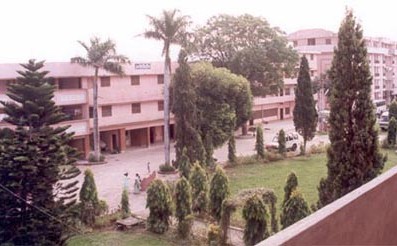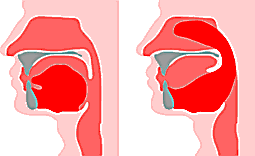Why Can the Knowledge Only Be Revealed by Maharaji?
As Prem Rawat's father and previous Perfect Master stated unequivocally, only an empowered Perfect Master in the bona fide lineage can reveal the Knowledge.
"The Holy Name should be received from one who himself received it from his Perfect Master, and who is presently Perfect Master in a correct spiritual succession. From ancient times the Perfect Master has channelised His spiritual power to His disciples. Since the Name comes from the same spiritual tradition, it has become very powerful. He who teaches this Name is called the Guru, and he who receives it is called the disciple." 1
 He was quite definite that it would be useless if revealed by someone else when he spoke in June, 1961, at Prem Nagar, India
"Sublime devotion, however, comes from implicit faith and confidence in the Satguru of the time, and it must be clearly understood that only He who can bestow God-vision instantaneously within oneself is the Satguru of the time, and no one else. In reality, He is God incarnate." 2
Shri Hans used the language and culture of India when he spoke and though Prem Rawat now speaks in the universal language of English
within the popular culture of the USA he has never said anything that contradicts the teachings of his father and previous Satguru. How could he?
The reason the techniques must only be revealed by the current Perfect Master can be best explained
by giving a brief run-down on the Knowledge techniques themselves. Remember, according to Prem Rawat and his followers, reading this will not help you one bit unless you obey the authorised process.
Learning the techniques will, undoubtedly, convince you that these methods could not possibly bring you to an incredible
experience of joy and inner peace unless you are helped and inspired by the grace of the present Perfect Master because they certainly
couldn't work otherwise and his followers claim that "Knowledge works!"
 |
 |
 |
 |
|
In the first technique, or Divine Light as it was formerly known, place your hands thus: the thumb and middle finger of your dominant hand stroke across each eyeball from outer corner to inner, coming to rest with a light but firm touch on the upper inner corner of each eyeball. Your forefinger rests in the middle of your forehead, just above the eyebrow line (your 'third eye'). In the early 70's the mahatmas who gave people Knowledge on Maharaji's behalf, and who performed this technique on them, often used to press the eyeballs hard, in their enthusiasm. Certainly if you do press your eyeballs hard you see swirling colors, and premies used to think this was the Divine Light, rather than the neural entopic phenomenon that any child discovers when they squeeze their eyes. Later Maharaji gave direction to give Knowledge the 'gentle way', emphasizing that it was not the pressure on the eyeballs that counted, and the point of touching the eyeballs with the thumb and middle finger was simply to steady them to allow you to focus better.
|
In the second technique, or Heavenly Music, place your hands thus: each thumb is placed in the ear and each hand is twisted upwards so that the four fingers of each hand rest on the top of your head, with each thumbtip lightly but firmly in each earhole, sealed with the twisting action.
For the first sixteen or so years that Prem Rawat was teaching in the West, it was common for meditators to use a 'beragon', which was an arm rest shaped like a letter 'T' about 2 feet high - the bottom of the stem of the 'T' rested on the floor or cushion you were sitting on, and each elbow rested on the crosspiece of the T. In the mid-eighties, Prem Rawat discouraged the use of beragons, or any form of arm rest, and the meditator was required to hold their arms up without support. |
The third technique, or Holy Name, or the Word, involves following your breath. Many meditation traditions involve watching the breath in some way. In the early 1970's you were instructed to imagine, or in fact actually hear, the sound of the in and out breath as 'so-hung' (soham): 'so' on the in-breath, 'hung' on the out-breath. This changed in the mid-1970's to an instruction to just 'follow the breath'.
|
The fourth technique, or Nectar, involves the tongue. The instructions are specific, and is the yogi technique of Kechari Mudra, where you curl your tongue up to the roof of your mouth. In the 1970's premies were told to stretch their tongue back so that it went behind the uvula (that skin flap hanging down at the back of your mouth at the entrance to your throat) and then up into your nasal cavity. The ultimate aim was to connect the tip of your tongue to the base of your brain and become enlightened! In the mid-1980's Maharaji changed the technique to an easier version, where you simply rested the tip of your tongue on the roof of the mouth, and curled it back as far as was comfortable. All references to the uvula and nasal cavity were dropped.
|
Anyone wishing to investigate the mechanics of the techniques of Knowledge to fully understand they require the grace of a living Perfect Master can see a fuller exposition of the techniques which is available
at prem-rawat-maharaji.info or at ex-Initiator and ex-Instructor Mike Finch's site.
Prem Rawat has always stated that those people with doubts should search everywhere and go to all gurus to try to quench their inner thirst
and to keep Maharaji in reserve. Finally when they understand that true experience can only be found through Prem Rawat, the Perfect Master they can come to him.
So should you wish to continue searching, other places that teach the same techniques include:
However:
If you want to wander and roam, Go on, go on, Till you're tired and you want to come home, Come home, come home, back to Maharaji,
Maharaji holds the key
1. Shri Hans Ji Maharaj, Hans Yog Prakash. Divine Light Mission, Delhi, India, late 1960s
2. Shri Hans Ji Maharaj, Who Is Guru Maharaji?.
>
See Site Policy for statement regarding copyright for these videos.   |
